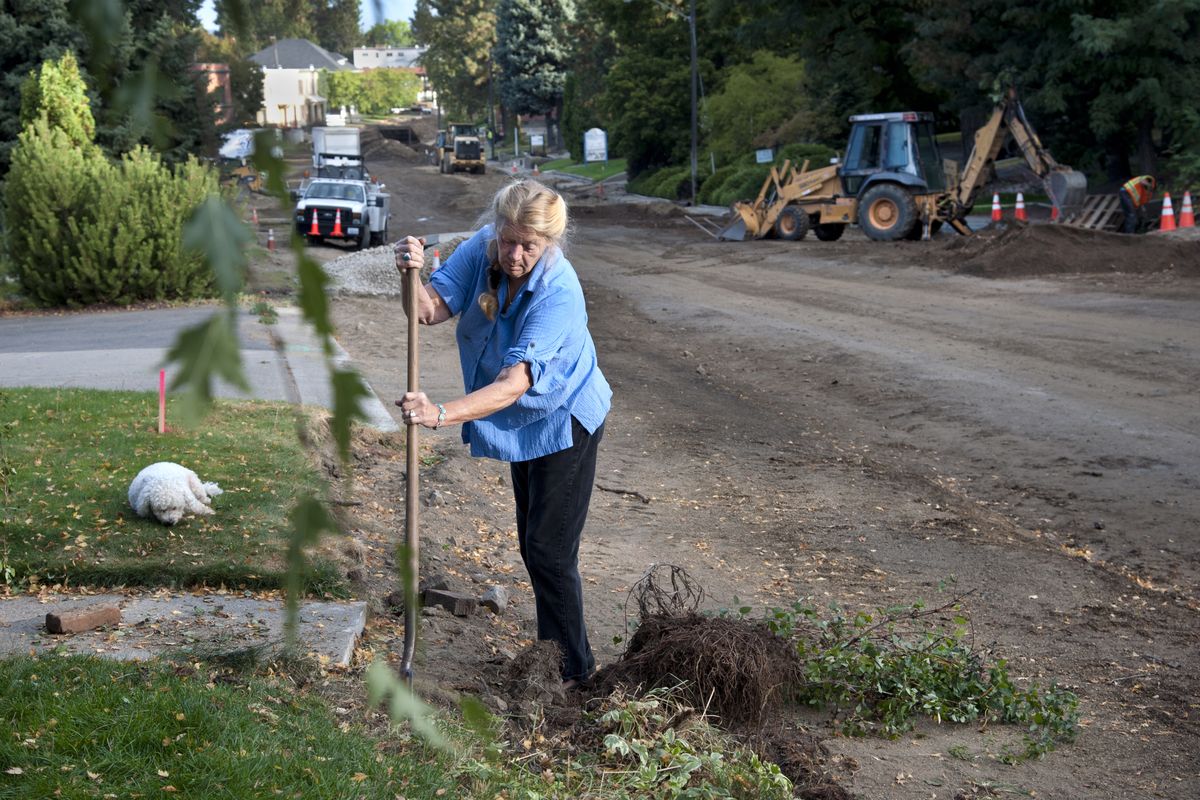This column reflects the opinion of the writer. Learn about the differences between a news story and an opinion column.
Shawn Vestal: Spokane street bond has been a winner

The freshly paved section of Grand Boulevard, from 14th to Ninth avenues, has forced me to ask myself some difficult questions.
Why do I find it so deeply pleasurable to drive on these redone roads? Am I just an irredeemable, bone-deep dork? Or are others also so conditioned by the bump and grind of Spokane city streets that a carpet of smooth, unbroken asphalt seems like nirvana?
Seriously. I took the long way home the other night just to drive it with my wife.
It’s odd and unsettling, how pleasurable it is to drive these fixed-up streets. Cruising the stretch of new asphalt on Grand feels like skiing a groomed run after a snowfall: fast, smooth, easy, fun. I felt the same way four years ago when Lincoln was rebuilt between 29th and 17th – a stretch that had been a bumpy goat trail. And I expect the same kind of nerdy elation again in the not-too-distant future, when the city concludes one of the final projects under the 10-year street bond: the stretch of Monroe between Eighth and 17th.
These roads pass very close to my home; I drive them virtually every day. If all politics is local, then all local politics is personal – and these new streets, for me, are personal. So they matter more to me than others, naturally. But the success of the street bond is that it has repaired enough streets that it feels personal to lots of us: 110 miles of Spokane streets, at a cost of $108 million.
I have sung praises to the street bond here before. It strikes me as one of the finer moments in practical, no-nonsense Spokane civics of the recent past: the pitch to the public by former Mayor Jim West (and others) was smart, specific and limited; voters agreed to pitch in to pay for a significant and clearly demonstrated need; and the city has carried out the work with transparency and flexibility.
The bond project has laid the groundwork – so to speak – for Spokane to continue moving past the days when our potholes were as defining as our marmots. Voters will consider extending the street investment this fall.
The street proposal essentially would continue the approach the city has taken for the past decade, including the method of integrating roadwork with the needed repairs of water lines and drainage infrastructure that the city is required to do to stop dumping so much stormwater into the river. This latter approach is one of the best things to come out of the Condon administration, a creative approach to killing extra birds with the same stones.
If the measure passes, “we’re going to use the same technology and techniques that have been successful over the past 10 years,” city spokeswoman Marlene Feist said.
Part of that is evident on Grand, where the smooth sailing comes thanks to maintenance work called “grind and overlay” – upkeep that follows the major rebuild of that stretch of road several years ago. It’s not a bond project, but it’s part of the overall approach that is placing a priority on keeping the roads in shape once they’ve been rebuilt.
Many of the new streets make it easier for people to walk and ride bikes on them as well, and this, too, is a serious community advantage; the difficulties of simply walking and riding are among the chief ways our streets, and particularly the arterials, have been unfriendly. And I would argue all this lends positivity – an immeasurable but definite uptick in feeling – which has also sometimes been in deficit around here. Just as certain cultural developments are helping to lend a sense of energy to town these days, so are these more concrete investments underfoot.
The Monroe Street work zone is fascinating to behold. The integrated approach of fixing the water system and roads at the same time means that things are dug up to a much greater degree than a typical road surface project. It looks like someone is digging a canal. When it’s finished, it will include the same kinds of “storm gardens” that line Lincoln, intended to divert stormwater from the city’s overflowing system of dumping it into the river.
The next step will be the steep portion of Monroe from Main to Eighth; if voters approve the levy this fall, it will include additional lighting and pedestrian improvements. If they don’t, it will be a more basic project.
I am selfishly looking forward to this project, the way I’ve selfishly relished the others that affect me the most. But the wider triumphs of the street bond aren’t focused there. They reach all over town and touch every neighborhood.
